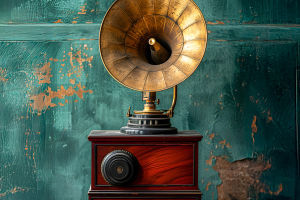Before the invention of clocks, ancient civilizations had to rely on their ingenuity to track time.
Though they didn’t have mechanical or digital devices, they used the natural world around them to measure the passage of time.
Curious? Here’s a look at some of the clever methods they employed!
1. Sun and Shadow: The Ancient Sundial
One of the earliest and most effective tools to determine time was the sundial. Ancient Egyptians, Greeks, and Romans were among the first to use sundials, which relied on the position of the sun and the shadows it cast. A vertical stick (gnomon) was placed in the ground, and the shadow it produced indicated the time of day. These were precise enough to distinguish hours, though the division of time was not standardized like today. Early sundials were simple, but over time, they evolved to be more accurate and portable.
2. Water Clocks: Measuring Time Drop by Drop
In civilizations like China, Greece, and Mesopotamia, water clocks or "clepsydra" became important timekeeping devices. These clocks measured the flow of water from one container to another, either by dripping or pouring at a steady rate. As the water level dropped, time passed. While they didn’t offer exact time down to the minute, they allowed for a consistent and reliable way to measure longer durations, such as hours or shifts for workers.
3. The Movement of the Stars: Ancient Astronomical Observations
Before mechanical clocks were common, ancient civilizations such as the Babylonians and Mayans paid close attention to the stars and celestial bodies. The position of certain stars in the night sky could signal different times of the year or help determine the time for specific activities.
For example, the Mayans used the movements of Venus, known as the "Morning Star," to track time for rituals and agricultural events. Similarly, the Egyptians used the heliacal rising of Sirius to mark the start of their agricultural year and the annual flooding of the Nile.
4. Hourglasses: Precision in Time
While most ancient timekeeping tools were based on natural elements, hourglasses provided a portable and consistent way to measure time. The earliest hourglasses were used in ancient Egypt and Greece, using sand flowing through narrow openings. Although the hourglass was not as common as sundials or water clocks, it was an effective tool for short-duration timekeeping, particularly in more controlled environments like monasteries or courts.
5. The Sound of Time: The Ancient Bell or Drum
Time was also measured through sound in some ancient cultures. In China, large bells were used in temples to signal the passing of hours, with their resonance marking different times of the day. Similarly, in ancient Japan, large drums were beaten to announce the changing of hours. These sounds were a communal cue for various events.
6. The Use of Natural Phenomena: Tracking the Seasons
Aside from the obvious use of the sun, many cultures also relied on the changing seasons to gauge the passage of time. Ancient farmers, for example, would track seasonal changes to determine the right times for planting or harvesting. They watched the behavior of animals, the blooming of flowers, or the migration of birds to mark time's progress. For example, the Romans noted that the blooming of certain flowers would signal the beginning of spring, which was crucial for agriculture.
7. The Water Clock and Astronomical Cycles: Bridging the Gap
Some advanced cultures, such as the Greeks and Romans, even combined different timekeeping methods. The Greeks, for instance, made early attempts at combining the water clock with astronomical observations. Some water clocks had marks for tracking not just hours, but also lunar phases and other celestial events, creating a more complex system of time that included both the natural flow of water and the movements of the stars.
Dear Lykkers! The ancient world had no clocks as we know them today, but that didn’t stop ancient civilizations from creating sophisticated methods to measure time. From the simple sundial to the water clock, and even the observation of stars, ancient people were incredibly resourceful in tracking the passage of time.
These early tools laid the groundwork for the development of more advanced timekeeping devices, ultimately leading to the mechanical clocks we use today!


